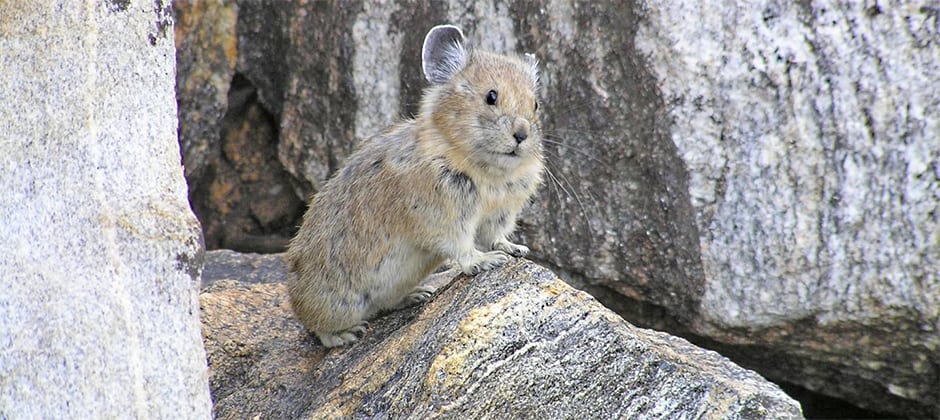Share this article
For pikas, heat isn’t climate change’s only threat
Throughout much of their range, American pikas (Ochotona princeps) face threats from warming temperatures brought on by climate change. Small mammal that mostly dwell in alpine talus across the West, they die if they’re exposed to temperatures above 77 degrees Fahrenheit for more than six hours, and their high-altitude habitat gives them little room to escape.
But researchers found that for pikas in the Pacific Northwest, climate change could present different threats. In some cases, they found, dry air and decreased snowpack may pose greater risks than hot summers.
“There are other things that can happen with increasing temperatures up here,” said TWS member Aaron Johnston, a researcher with the U.S. Geological Survey and lead author on a study of Cascades pikas published in Ecology.
Throughout much of their range — across the Rockies and the Sierra Nevada — pikas are well-researched, Johnston said, but they’re less understood in the Pacific Northwest, where they behave differently. Rather than being limited to high-elevation talus fields, pikas in the Northwest can range from the peaks of the Cascades down to the Columbia River Gorge, close to sea level.
After a record-low snowfall during the winter of 2014-2015, Johnston wanted to see how
well pikas in Washington’s North Cascades National Park had survived. Pikas spend most of the winter beneath the snowpack, using it for insulation from cold temperatures. Given the lack of snow that year, he and his team wondered if the reduced snowpack caused them to freeze to death.
What they found was far more complicated. Pikas survived the winter, but the following year, differences emerged. At lower elevations, their numbers decreased sharply. At higher elevations, their numbers increased. “That led us to try to work that one out,” Johnston said.
His team’s research led them to suspect something other than temperature was at work — something that wouldn’t affect population numbers for months. That factor, they concluded, was atmospheric moisture — or rather, the lack of it.
Drier air has a higher vapor pressure deficit, which affects plants that pikas depend on for food. It also decreases the density of the snowpack. The researchers concluded that the unusually high vapor pressure deficit during the snow drought dried up moisture-loving plants, like mosses, that lower-elevation pikas rely on for forage. Malnourished, the pikas went without reproduction that year, resulting in lower numbers the following year.
Along a narrow middle-elevation band, the lack of snowpack did affect the pikas, researchers concluded, but again, the results didn’t show up until the following year. The cold didn’t kill them, they determined, but it did stress them, resulting in fewer offspring.
At higher elevations, the warmer temperatures proved beneficial. Pikas had enough snow for winter insulation, and earlier snowmelt ushered in a longer growth season with more forage than usual, boosting reproduction.
The results were unexpected. “I think the big surprise for us was the influence of vapor pressure deficit,” Johnston said. “As we dug further, it became evident that atmospheric moisture has a pervasive influence on animal habitat and on distribution, which is largely unexplored.”
Based on climate models, Johnston said aridity will likely become a growing issue for pikas in the Pacific Northwest, a region that conservationists hoped might be a refugia as their southern range warms. Instead, Johnston found, at least at lower elevations, Northwest pikas may face a different threat from climate change.
“This gives us a peek into what could happen over the coming decades,” Johnston said.
Header Image: Pikas are sensitive to overheating, but researchers found climate change can also present other dangers. ©Shana Weber








